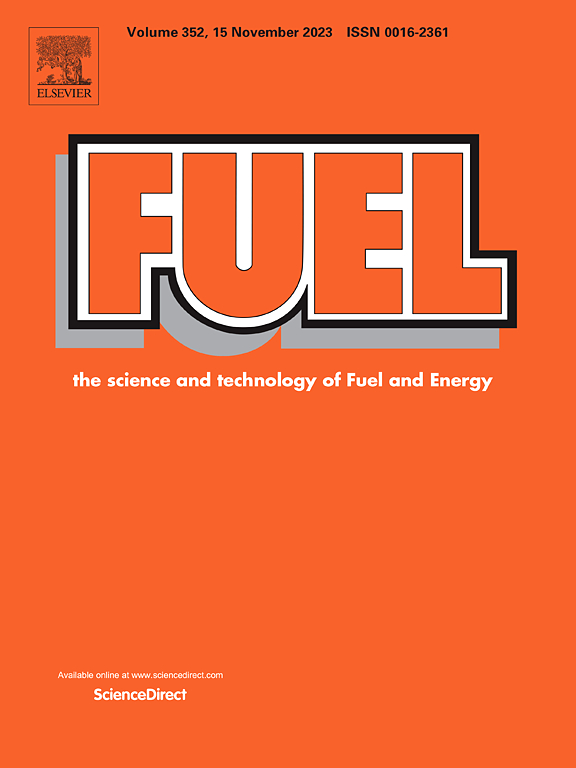Characterization and syngas production from downdraft gasification of bio-briquettes made from Lantana Camera L. and Parthenium hysterophorous L. weeds using poultry litter and cow dung as binder
IF 6.7
1区 工程技术
Q2 ENERGY & FUELS
引用次数: 0
Abstract
The study investigates the characteristics of biomass briquettes made from different proportions of Lantana Camera L. and Parthenium hysterophorous weeds, poultry litter, and cow dung as binder. About 30 blends were created and tested. The briquettes made from cow dung showed better durability and fuel ratio. The Shalter Index was maximum at 50–75% for Lantana Camara L. and 4% cow dung as binder. Thermogravimetric analyses were conducted for combustion profiles of biomasses with three main stages of mass loss. Experiments were conducted for gasification, with four different equivalence ratios (ER) applied. The highest hydrogen percentage (21%) was observed at ER 0.26, 6% poultry litter, and a blend of 25% Lantana Camara L. and 75% Parthenium hysterophorus L. The maximum CO% and methane percentage were achieved at ER 0.26, resulting in 3.1% production. Cow dung performed better than poultry litter as a binder, with most blends showing over 50% higher gasification efficiency. These material combinations have not been previously explored. This study addresses a gap by offering insights into the effective use of weeds and animal waste for syngas production through downdraft gasification.
该研究调查了用不同比例的Lantana Camera L.和Parthenium hysterophorous杂草、家禽粪便和牛粪作为粘合剂制成的生物质压块的特性。共制作并测试了约 30 种混合物。用牛粪制成的煤球显示出更好的耐久性和燃料比。当香蒲和 4% 的牛粪作为粘合剂时,沙尔特指数(Shalter Index)在 50-75% 之间最大。对生物质的燃烧曲线进行了热重分析,主要有三个质量损失阶段。气化实验采用了四种不同的当量比(ER)。在等效比为 0.26、6% 的家禽粪便和 25% Lantana Camara L.与 75% Parthenium hysterophorus L.混合时,氢气比例最高(21%);在等效比为 0.26 时,二氧化碳和甲烷比例最高,产量为 3.1%。牛粪作为粘合剂比家禽粪便效果更好,大多数混合物的气化效率比家禽粪便高 50%以上。这些材料组合以前从未被探索过。本研究填补了这一空白,深入探讨了如何有效利用杂草和动物粪便通过下气流气化生产合成气。
本文章由计算机程序翻译,如有差异,请以英文原文为准。
求助全文
约1分钟内获得全文
求助全文
来源期刊

Fuel
工程技术-工程:化工
CiteScore
12.80
自引率
20.30%
发文量
3506
审稿时长
64 days
期刊介绍:
The exploration of energy sources remains a critical matter of study. For the past nine decades, fuel has consistently held the forefront in primary research efforts within the field of energy science. This area of investigation encompasses a wide range of subjects, with a particular emphasis on emerging concerns like environmental factors and pollution.
 求助内容:
求助内容: 应助结果提醒方式:
应助结果提醒方式:


